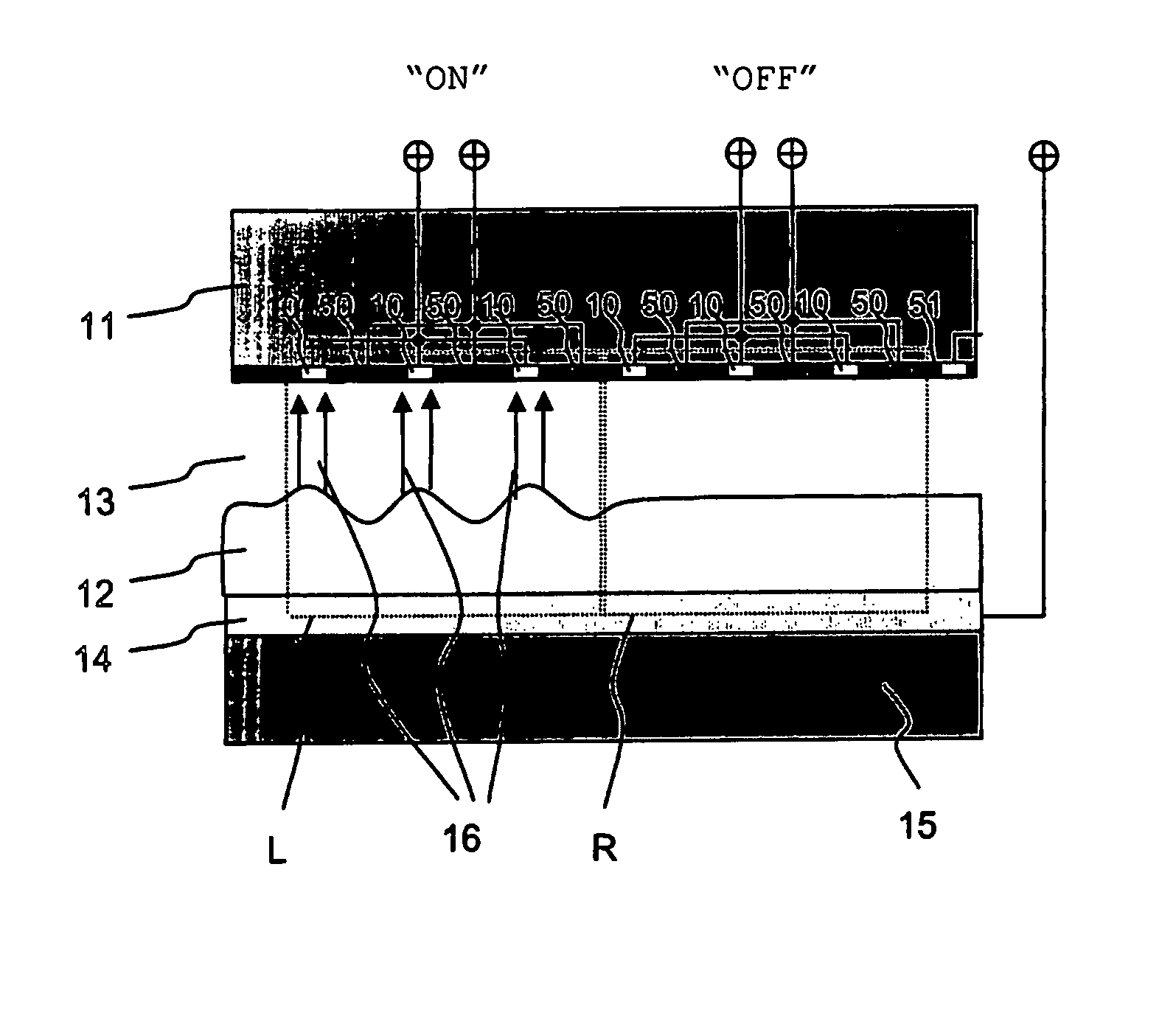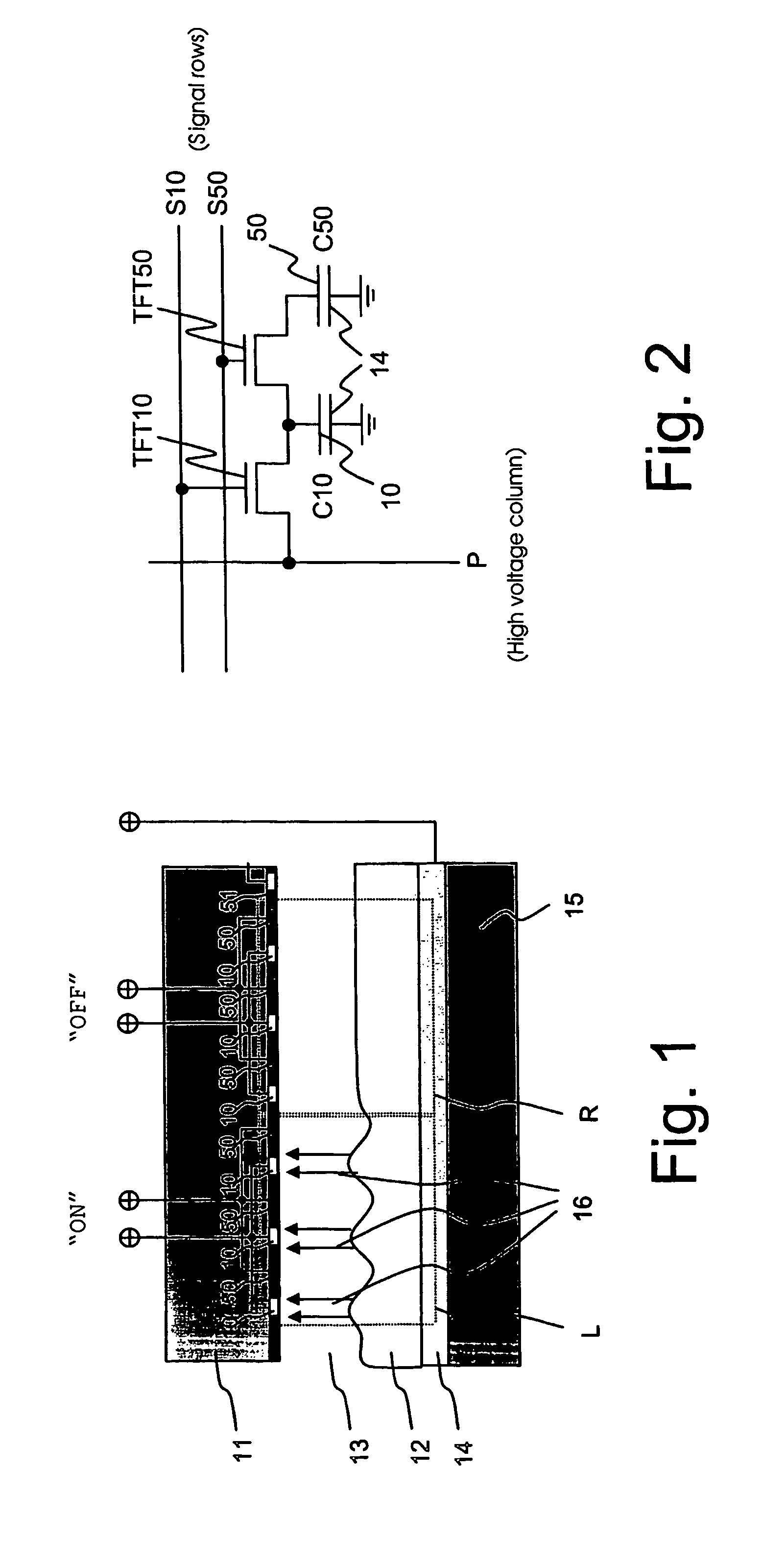Electrical device utilizing charge recycling within a cell
a cell and charge recycling technology, applied in the direction of basic electric elements, electromagnetic wave modulation, instruments, etc., can solve the problems of impairing the light modulating capabilities of individual pixels or cells, the difficulty of producing desired gel relief profiles with good precision, and the power consumption becomes very important, so as to improve the performance and properties of the enhanced electrodes. , the effect of increasing the power consumption of the device and improving the performance and properties
- Summary
- Abstract
- Description
- Claims
- Application Information
AI Technical Summary
Benefits of technology
Problems solved by technology
Method used
Image
Examples
Embodiment Construction
[0022]In the following, the invention is explained in more detail using as an example an enhancement electrode driving system in an optical cell type display. The most important benefits of the invention compared to the prior art solutions are pointed out.
[0023]Earlier patent application PCT / FI02 / 00512 describes the basic function and the layout of the enhancement electrodes in detail, but does not teach any implementation scheme for driving the enhancement electrodes except the obvious solution using a separate power supply and control. In the following, the main attention is directed to the electrical functioning of the electrode configuration. If necessary, more detailed information regarding to the possible layouts of enhancement, signal, and support electrodes in an optical display device may also be found from the aforementioned earlier application.
[0024]To begin, it has to be pointed out that the signal- and enhancement electrode systems can be regarded as separated capacitor...
PUM
| Property | Measurement | Unit |
|---|---|---|
| electric field | aaaaa | aaaaa |
| electric charge | aaaaa | aaaaa |
| voltage | aaaaa | aaaaa |
Abstract
Description
Claims
Application Information
 Login to View More
Login to View More - R&D
- Intellectual Property
- Life Sciences
- Materials
- Tech Scout
- Unparalleled Data Quality
- Higher Quality Content
- 60% Fewer Hallucinations
Browse by: Latest US Patents, China's latest patents, Technical Efficacy Thesaurus, Application Domain, Technology Topic, Popular Technical Reports.
© 2025 PatSnap. All rights reserved.Legal|Privacy policy|Modern Slavery Act Transparency Statement|Sitemap|About US| Contact US: help@patsnap.com



